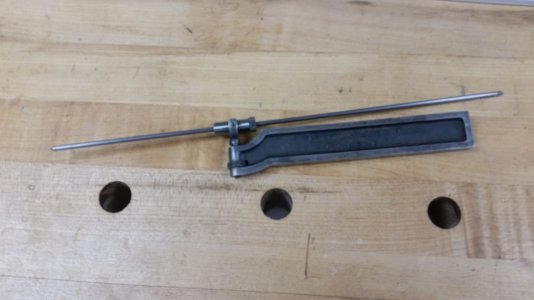- Joined
- Jun 7, 2013
- Messages
- 10,067
A refinement of the tool is to make a large enough diameter pin and drill and ream a hole in the back (unpointed ) side of it to insert a smaller piece of round stock that has a center drilled end; a spring is inserted in the hole in the larger pointed pin, so that in use the spring is somewhat compressed, which eliminates the binding which occours when the part is moved in the chuck and also serves to push the part against the chuck jaws. I think that I got the first one that I have from someone who had worked at Mare Island Navy Yard, where they were made. I left it at my shop when I sold out and since made another for myself. A note; a small hole is cross drilled through the large part to relieve air pressure when inserting the smaller part.


